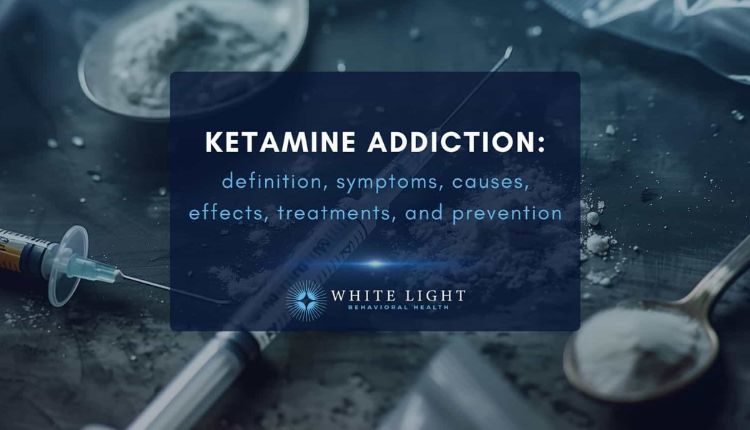ociation, the way it quiets a racing mind or eases pain. But when the high fades and use stops, the real struggle kicks in. The psychological effects of withdrawal hit hard, often catching folks off guard.
This piece dives into the range of mental challenges after heavy or long-term ketamine use. You’ll see how dependence leans more on the mind than the body. We cover ketamine withdrawal symptoms, the pull of psychological dependence, and ways to handle the ketamine aftermath. It’s not just about quitting—it’s about rebuilding your headspace.
Understanding the Mechanism of Ketamine Dependence
Ketamine works by blocking NMDA receptors in the brain. This action messes with glutamate, a key chemical for mood and thought. Over time, your brain adapts, craving the drug to feel normal again.
Neurobiological Underpinnings of Craving
Glutamate gets out of balance from ketamine’s grip on those receptors. Dopamine pathways light up too, sparking that urge for more. Tolerance builds fast; what once gave a mild buzz now needs bigger hits to break through.
Users chase the same float to dodge boredom or stress. Studies show this shift ties to reward centers gone haywire. The brain learns to link ketamine with relief, making cravings feel like a must-have fix.
Distinguishing Physical vs. Psychological Withdrawal
Physical signs from ketamine detox stay mild. You might shake, sweat, or feel chills for a few days. But the mind’s fallout drags on much longer.
Psychological dependence rules here. Anhedonia— that joyless void—strikes deep. Cravings pulse like old habits you can’t shake.
Think of it as your brain rewiring after a storm. Body symptoms pass quick, but mental ones linger, testing your will.
The Role of Environment and Context
Where and why you used ketamine shapes the pull to return. Party scenes or solo nights for self-soothe build strong triggers. A song, a smell, or stress can spark the itch.
Social ties matter too. Friends who use keep the cycle alive. Breaking free means changing your spots and routines.
Context turns use into a crutch. Spot those cues early to cut relapse risks.
Common Psychological Withdrawal Symptoms
After chronic ketamine hits, your mind scrambles to reset. Emotions swing wild, thoughts fog up. These ketamine withdrawal symptoms show the brain’s tough fight back to normal.
Protracted Anxiety and Agitation
Anxiety creeps in like a shadow after you quit. Panic attacks might jolt you awake, heart pounding. Restlessness buzzes constant, making calm feel out of reach.
This can last weeks, even months—a protracted withdrawal syndrome doctors note in clinics. Your nerves stay on edge as glutamate levels even out. Simple tasks turn tense.
One user shared how everyday noise felt like threats. Breathing exercises helped, but pros say therapy speeds relief.
Anhedonia and Depression
Pleasure vanishes in anhedonia’s grip. Food tastes flat, laughs don’t land. Mood dips into dark spells, with depression risking a deep hold.
Dopamine receptors slowly heal, but it hurts. Swings from numb to tearful drain your days. Data from addiction centers shows half of quitters face this for months.
It’s like colors draining from life. Push through with small wins to rebuild joy.
Cognitive Impairment and ‘Brain Fog’
Focus slips away; words hide on your tongue. Memory plays tricks, forgetting what you just learned. Executive tasks—like planning your day—feel like climbing a wall.
Brain fog clouds everything, a sluggish mental haze. Ketamine’s dissociative toll lingers, slowing recall and sharp thinking. Studies link this to glutamate’s role in clear cognition.
You might stare at a book, pages blurring. Time and patience, plus brain games, ease it back.
Intense Psychological Cravings and Obsessive Thoughts
Cravings hit like waves, not hunger pangs but mind screams. Thoughts loop on the next dose, pulling focus. It’s behavioral, tied to old patterns more than body needs.
These aren’t just wants—they obsess, stealing sleep. Triggers like stress amp them up. Experts say 70% of users battle this in early recovery.
Picture a magnet drawing you back. Distraction and talk therapy break the hold.
Dissociation and Perceptual Disturbances Post-Use
Ketamine’s dissociative nature leaves echoes. Even after it’s gone, your sense of self wobbles. These effects mimic other mental health woes, adding confusion to recovery.
Persistent Depersonalization and Derealization (DP/DR)
You feel detached, like watching your life from afar. The world seems unreal, people distant. DP/DR sticks around, fueling distress long past detox.
This stems from ketamine’s receptor block, now rebounding wrong. It can last months, per user reports and psych studies. Daily life turns surreal, chores a dream.
One analogy: it’s like living in fogged glass. Grounding tricks, like touching objects, pull you back.
Hallucinogen Persisting Perception Disorder (HPPD) Overlap
Visual glitches pop up—flashbacks of trails or colors. Objects seem to shift, echoing ketamine’s warp. HPPD-like symptoms overlap with psychedelic aftermaths.
Not everyone gets this, but heavy users report it. Bright lights or stress trigger flares. Research ties it to serotonin tweaks alongside glutamate.
It fades with time, but eye checks rule out other issues. Avoid stimulants to calm it down.
Sleep Disturbances and Nightmares
Insomnia strikes, nights chopped into bits. You toss, mind racing on ketamine memories. Vivid nightmares replay highs or falls, haunting your rest.
Poor sleep worsens daytime fog and mood. REM cycles disrupt from the drug’s hold. Clinics see this in most withdrawal cases.
Wind down with routines—no screens, warm tea. It rebuilds your night’s peace.
Strategies for Managing Ketamine Withdrawal
Quitting ketamine demands a plan for the mind’s storm. Evidence shows support cuts the pain. Start with pros, add daily tweaks for steady healing.
Professional Intervention and Detox Planning
Don’t go solo—med docs oversee even mental symptoms. Detox centers handle safe stops, watching for spikes. Tailored plans spot risks early.
Therapists assess your psychological dependence level. Meds like anti-anxiety aids bridge tough spots. Stats show supervised care boosts success by 40%.
Reach out; it’s a smart first step.
Therapeutic Modalities for Psychological Healing
CBT rewires anxious thoughts, taming cravings. Sessions teach tools to challenge urges. MI builds your quit motivation, gentle but firm.
Group talks share stories, cutting isolation. Online forums help too. Pick what fits—mix for best results.
- List triggers in a journal.
- Practice deep breaths during panic.
- Join weekly meets for accountability.
These heal the ketamine aftermath core.
Lifestyle Adjustments to Support Neuroplasticity
Sleep right: dim lights, steady bedtime. Eat balanced—veggies, proteins fuel brain repair. Drink water; dehydration amps fog.
Move your body: walks clear the head. Mindfulness apps guide calm breaths. Small habits spark neuroplasticity, your brain’s flex.
Track progress; wins build momentum. It counters anhedonia’s drag.
Long-Term Psychological Recovery and Relapse Prevention
Sustained sobriety means facing why you started. Build mental strength against slips. Recovery from ketamine addiction takes ongoing work.
Identifying and Addressing Co-Occurring Disorders
Ketamine often hides anxiety or trauma. Depression might fuel the cycle too. Dual-diagnosis care treats both, key for lasting change.
Therapy digs roots—past hurts or stress. Meds balance moods without new risks. About 60% of users have these overlaps, per studies.
Heal the base; the rest follows.
Building a Relapse Prevention Toolkit
Spot risks: old pals, low moods, or lone nights. Have quick outs—call a friend, hit the gym. Apps track moods, flag danger zones.
- Carry a “craving card” with reasons to stay clean.
- Role-play tough spots in therapy.
- Reward sober milestones, like a fun outing.
This toolkit guards your progress.
Re-establishing Purpose and Meaning
Chase goals that light you up—hobbies, jobs, or learning. Reconnect with non-using friends for real bonds. Natural rewards fight anhedonia’s empty feel.
Volunteering adds sense. Journal dreams to refocus. Purpose anchors you past the haze.
It turns survival into thriving.
Conclusion
Ketamine withdrawal symptoms center on the mind’s long haul, not quick body aches. Psychological dependence creates cravings, anxiety, fog, and joy loss that test your grit. Yet with pro help, therapy, and life tweaks, you navigate the aftermath.
Early steps make all the difference. Seek support to rebuild stronger. If ketamine’s pull lingers, talk to a specialist today—recovery waits for no one.






